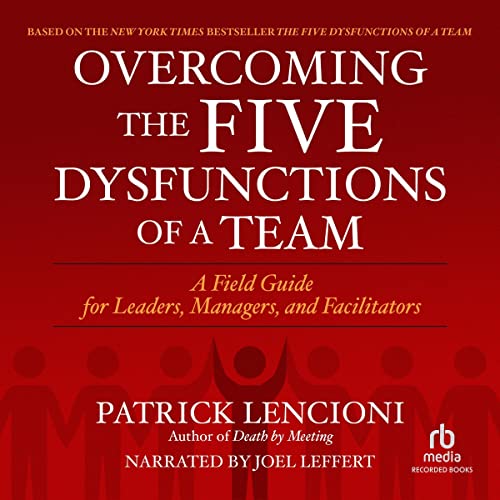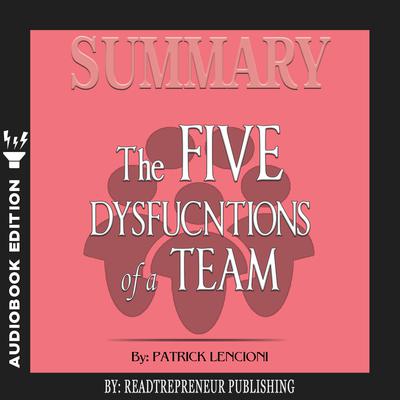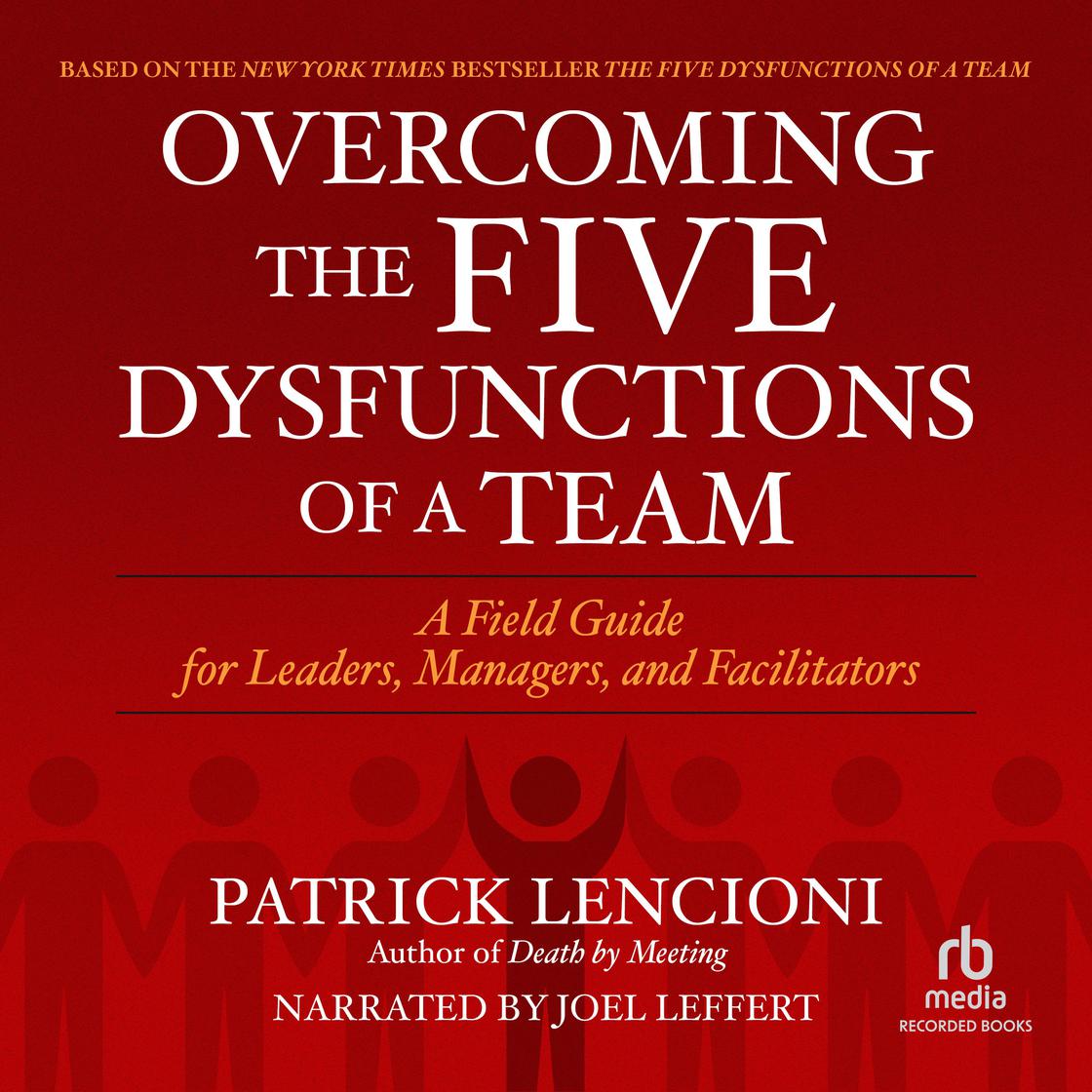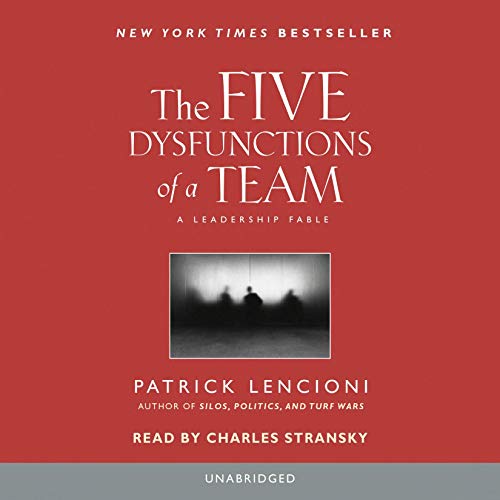Patrick M. Lencioni’s “The Five Dysfunctions of a Team” audiobook reveals the common pitfalls that hinder team success. It offers practical solutions to build a cohesive and effective team.
This audiobook explores the five main dysfunctions that undermine team effectiveness: absence of trust, fear of conflict, lack of commitment, avoidance of accountability, and inattention to results. Lencioni uses a compelling fable to illustrate these challenges and provides actionable strategies to overcome them.
His insights are crucial for leaders and team members striving for high performance. By understanding and addressing these dysfunctions, teams can enhance collaboration, boost productivity, and achieve their goals. “The Five Dysfunctions of a Team” is a must-listen for anyone looking to foster a healthier, more productive team environment.

Introduction To Patrick Lencioni’s Insights
Patrick M. Lencioni is a well-known author and speaker. His book, ‘The Five Dysfunctions of a Team’, is popular in business circles. This audiobook reveals the secrets to effective teamwork. Lencioni’s insights are practical and easy to understand. He explains why many teams fail and how to fix these issues.
The Premise Behind ‘the Five Dysfunctions Of A Team’
The book outlines five key dysfunctions that hinder team success. These dysfunctions are:
- Absence of Trust: Team members are not open with each other.
- Fear of Conflict: Teams avoid healthy debates and discussions.
- Lack of Commitment: Team members do not buy into decisions.
- Avoidance of Accountability: People do not hold each other accountable.
- Inattention to Results: Team members focus on personal goals, not team success.
These dysfunctions can destroy a team’s productivity. Lencioni provides strategies to overcome these issues.
Lencioni’s Influence On Modern Team Management
Patrick Lencioni has a significant impact on how teams are managed today. His book is a guide for leaders and managers. Many organizations use his principles to build strong teams. Lencioni’s focus on trust and accountability is crucial. Effective teams are built on these foundations. His insights help leaders create a culture of openness and collaboration. This leads to better results and happier team members.

Core Concepts Of The Five Dysfunctions
Patrick M. Lencioni’s audiobook, The Five Dysfunctions of a Team, explains common issues faced by teams. Understanding these core concepts can help improve team dynamics. Below, we explore the five dysfunctions in detail.
Absence Of Trust: The Foundation Of Teamwork
Trust is the base of any strong team. Without trust, team members hide their weaknesses. They are not open with each other. This leads to a lack of cooperation. Trust allows team members to rely on each other.
| Effects of Trust | Without Trust |
|---|---|
| Open communication | Hidden agendas |
| Collaboration | Isolation |
Fear Of Conflict: The Threat To Vibrant Discussions
Teams must discuss ideas openly. Fear of conflict prevents this. Members avoid tough discussions. This leads to poor decisions. Healthy conflict is crucial for growth. It encourages new ideas and solutions.
- Open debates
- Better solutions
- Growth
Lack Of Commitment: The Peril Of Ambiguity
Teams need clear goals. Without commitment, members are unsure of their roles. This ambiguity causes confusion. Clear commitment leads to focused action. It ensures everyone is on the same page.
Commitment brings clarity and direction.
- Defined roles
- Clear objectives
- Unified team effort
Avoidance Of Accountability: Eroding Team Standards
Teams must hold each other accountable. Avoidance of accountability leads to reduced standards. Without it, members do not meet goals. Accountability ensures everyone performs their best. It maintains high standards.
- Set clear expectations
- Monitor progress
- Provide feedback
Inattention To Results: Sacrificing Team Goals
Teams must focus on collective results. Individual goals can distract from team success. Inattention to results weakens team performance. Teams should prioritize shared goals. This drives success and unity.
Focus on results ensures team success.
- Shared objectives
- Unified efforts
- Collective success
Implementing The Model In Real-world Scenarios
Patrick M. Lencioni’s audiobook, The Five Dysfunctions of a Team, offers practical advice. Teams can benefit from understanding the model and applying it. Let’s explore how to implement these principles in real-world scenarios.
Strategies For Building Trust Among Team Members
Trust is the foundation of a strong team. Build trust through open communication and honesty. Encourage team members to share their personal stories. This helps to create a deeper connection.
Use team-building activities to foster trust. Activities like group projects or trust exercises can be beneficial. Regularly check in with each team member. Ensure they feel heard and valued.
Encouraging Healthy Conflict For Better Decisions
Healthy conflict leads to better decisions. Encourage team members to voice their opinions. Create a safe space for discussions. Ensure that all voices are heard without judgment.
Use structured debate formats. This helps to focus on issues rather than personalities. Facilitate discussions to stay on track. Make sure conflicts are resolved constructively.
Fostering Commitment Through Clarity And Buy-in
Clarity and buy-in are crucial for commitment. Clearly define team goals and individual roles. Make sure everyone understands their responsibilities.
Hold regular meetings to review progress. Allow team members to express their concerns. Ensure that everyone is on the same page. Use visual aids like charts or tables for clarity.
| Team Goal | Individual Role |
|---|---|
| Project Completion | Project Manager |
| Marketing Strategy | Marketing Lead |
Promoting Accountability With Constructive Feedback
Accountability is key for team success. Provide constructive feedback regularly. Focus on behaviors and outcomes, not personalities.
Use the SMART criteria for feedback. This means feedback should be Specific, Measurable, Achievable, Relevant, and Time-bound. Encourage peer feedback within the team. This builds a culture of accountability.
Aligning Team Objectives For Optimal Outcomes
Aligned objectives lead to optimal outcomes. Ensure team goals align with the organization’s vision. Regularly review and adjust objectives as needed.
Use project management tools to track progress. This ensures everyone is working towards the same goals. Celebrate small wins to keep the team motivated. Recognize individual contributions to the team’s success.
- Use project management tools
- Regularly review objectives
- Celebrate small wins
Implementing these strategies can transform your team. The audiobook, The Five Dysfunctions of a Team, provides a roadmap for success.

Conclusion
Unlocking the secrets of team dynamics, Patrick M. Lencioni’s audiobook is a must-listen. It offers practical insights and actionable strategies. Strengthen your team’s cohesion and performance today. Dive into “The Five Dysfunctions of a Team” and transform your organizational success.
Don’t miss out on these valuable lessons for effective teamwork.



